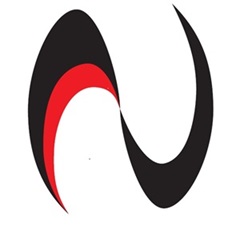
You are learning the PRT@ in its supine (face up) floor holding configuration, which requires two people to perform (from the “Settle Position” to our Two Person Supine floor hold).
This advisory is for supine (face up) holds. If you use, teach and are trained in prone holds, see Module 7 for the PRT® TRIPOD ADVISORY for the safeguards for the PRT in its prone or face-down configuration. If you, your organization/school, state etc. does not use or teach prone holds and YOU FIND YOURSELF IN A FACE-DOWN CONFIGURATION, REGARDLESS OF HOW YOU GOT THERE, you must either:
- ASSIST HIM BACK TO AN UPRIGHT/SETTLE POSITION CONFIGURATION AND TRANSITION TO THE TWO PERSON SUPINE OR
- LET GO OF HIM COMPLETELY
Supine floor Holding Safety Protocol:
Chest compression (placing sufficient weight or pressure on a client to restrict breathing), fatigue, client obesity, alcohol or drug use, heart conditions and/or other complicating medical and other factors (known and unknown to you) can all cause serious injury or death. HWC requires that you “continuously monitor the physical and emotional safety of the client” for any evidence of emotional and/or physical distress in all of the PRT’s holding configurations (Standing, Settle, Supine or Neutral/Prone) for the duration of the hold.
Whenever possible, there should be someone posted near the head of the client who is dedicated to CONTINUOUSLY MONITORING THE PHYSICAL AND EMOTIONAL SAFETY OF THE CLIENT.
Remain vigilant for any evidence of physical or emotional distress including, but not limited to, changes in or loss of consciousness, a sudden cessation of struggling, seizure, voiding of bladder or bowels, difficulty communicating, choking (indicating the possibility of aspiration), vomiting or heaving, changes in breath sounds, color, complaints of chest pain, difficulty breathing etc. Observe for food, gum or foreign objects in the mouth which may cause a choking incident. Consult with your organization’s medical staff if you have any question concerning the suitability of the PRT in any of its configurations for a particular client. HWC can also discuss any concerns with you or your medical staff and help you to make adjustments to the hold for specific clients, including modifications for casting of limbs, amputations, pregnancy, etc.
HWC recommends that every staff member with direct care responsibility or who will foreseeably be involved in a restraint, receive CPR training.
If a client is in distress assess the situation and determine what actions are appropriate, including, but not limited to:
- Releasing the client from restraint
- Calling 911
- Calling on-site or off-site medical staff
- Calling for assistance
- Implementing first aid
- Commencing CPR
- Physical examination
- Medical examination
Additionally:
- Limit the number of takedowns by taking advantage of the walls and other stable structures for support and stability whenever possible. For in-facing standing PRT wall restraints, always back yourself to the wall first then smoothly turn the client to face the wall on the tightest possible axis.
- In an unassisted (solo) takedown to the settle or seated position, the PRT person is responsible for continuously observing and monitoring the client until someone else is in position to assume that responsibility.
- The two staff involved in our Supine hold are responsible for continuously observing and monitoring the client until additional help arrives. The first person to arrive to assist should position himself or herself at to the client’s head in order to be completely dedicated to the task of continuously observing and monitoring the physical and emotional safety of the client.
- Always protect the client’s head from contact injuries with the floor with the combination of an appropriate cushioning material and careful manual stabilization.
- If either of the staff members performing the hold is fatigued or, for any reason, needs to be relieved, he/she can be replaced by transitioning someone else into position, as demonstrated during training.
- It may be possible to avoid a Supine hold if you gain compliance (or policy dictates) by stopping at the “Settle Position”. Although the Settle Position is not as stable as our Supine hold, it can be additionally stabilized by changing to a “Modified Settle” (seated position), using the method described for pregnant females in Module 7. Use a wall, other stable objects or additional staff to help secure the hold and ensure that it remains upright and stable.
- If the supine hold is required, you may then switch to “Two Person Supine Method”.
- Initiate the physical “letting go process” (module 11) and take other appropriate steps as needed to transition the client out of the hold as soon possible i.e.as the client completes his or her “recovery arc” and returns to a calm mind state.